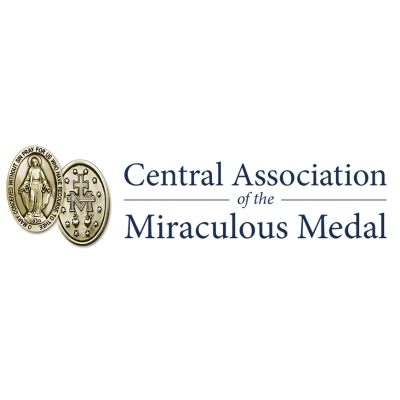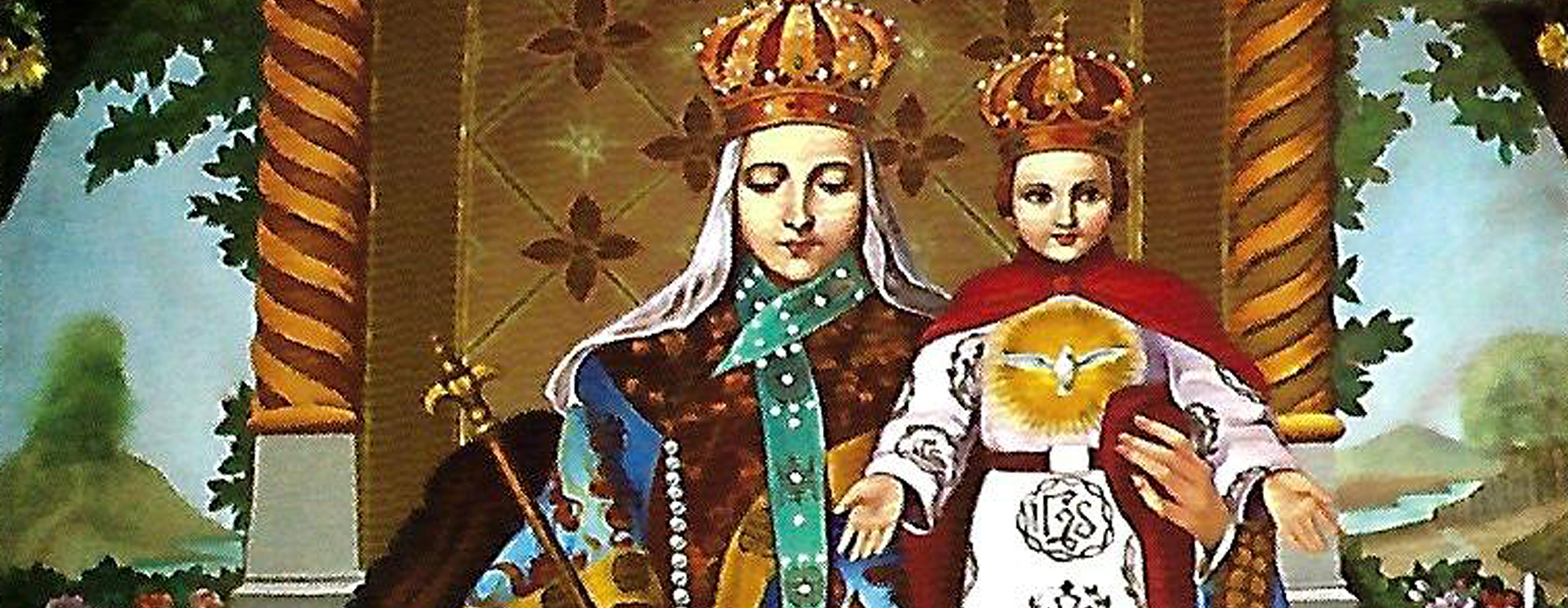The Holy Remedy
The Holy Remedy
By the 16th century, a strong Marian culture was emerging in China. One Vincentian traveled to East Asia with a dream and a vision to build on this devotion by introducing the Miraculous Medal.
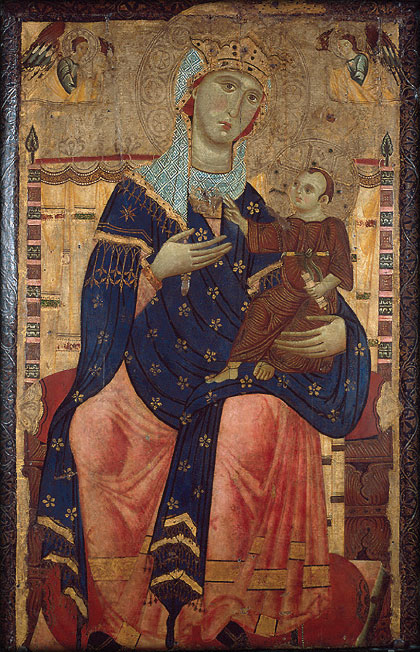 The landscape is vast, uniting coastal plains with verdant mountains, open steppes with crammed cities, spotless streets with impenetrable air pollution. This is China, the land of contradictions, and its relationship with Christianity is complex.
The landscape is vast, uniting coastal plains with verdant mountains, open steppes with crammed cities, spotless streets with impenetrable air pollution. This is China, the land of contradictions, and its relationship with Christianity is complex.
The first Catholics to arrive in China were the Franciscans, who ventured the rugged trip across the Black Sea and Crimea in the late 13th century. Upon arrival, they found a land and people who were intriguing, and markets that held fascinating goods, like silk, cinnamon, and porcelain. The Franciscans brought their love for the Church and our Blessed Mother, frequently using popular Marian images from their Italian homeland to explain the faith. The one they used most often was known as “the Madonna of Humility, where Mary is painted holding Jesus in her lap.”(1) In 1299, they built the first Catholic Church in current-day Beijing, and by the time the Jesuits came to China in the 16th century, they discovered “there was already a strong culture of Chinese Marian imagery, or at least of Marian imagery produced in China.”(2) Thus, the groundwork for a strong devotion to Mary had been laid.
VINCENTIANS IN CHINA
Fast forward to St. Vincent de Paul, whose Congregation of the Mission became international during his lifetime.(3) While he had read about China and desired to send missionaries there, St. Vincent didn’t live to see that dream realized. In 1697, thirty-seven years after his death, the first Vincentian missionary, accompanied by a diocesan priest who later joined the Congregation, made the two-and-a-half-year journey to China. They established a seminary in Chongquing and ordained priests, but by 1760, the mission had dwindled. Twenty-four years later, the Vincentians were asked to return to China.
It’s been estimated that by the 1830s, approximately 200,000 Chinese had become Christians. And while some of the Catholic priests and lay people had been martyred (like St. Francis Regis Clet, CM, who was tortured and killed in 1820 at Wuchang, modern-day Wuhan), missionaries continued to arrive in China.
Enter St. John Gabriel Perboyre, CM, who, like St. Vincent, had a dream to serve in China. Born in France in 1802, he joined the Congregation of the Mission at the age of sixteen and was ordained a priest at twenty-three. In 1835, he arrived in Macau and remained there for six months before spending another six months traveling to Hunan, where he had been assigned. He remained in Hunan for a year and a half, after which he was asked to go to the province of Hubei in January 1838.
Much like the Franciscans before him, he brought a familiar and loved remembrance of his homeland throughout his ventures in China: the Miraculous Medal. According to Fr. Robert Maloney, CM, St. Perboyre knew Fr. Jean Marie Aladel, CM, who was the spiritual director of St. Catherine Labouré. “A reading of Perboyre’s letters makes it evident that he and others brought the [Miraculous Medal] to China soon after the apparitions in Paris and, through it, fostered devotion to Mary.”(4)
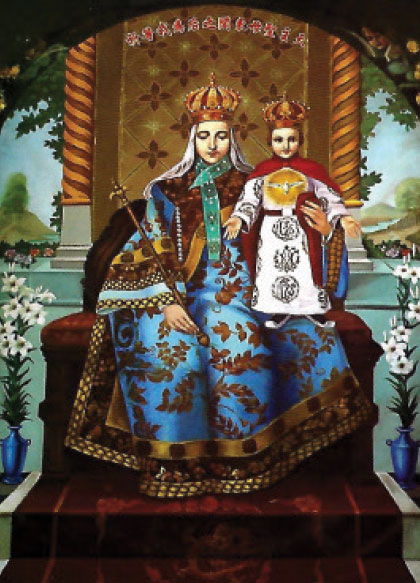 Even prior to leaving for China, St. Perboyre was already distributing the Miraculous Medal. While still in Paris, he wrote to his uncle, telling him about it and promising to send some to him. “His letters to his brother, Antoine, and to his uncle … make frequent references to the medals and to miracles. He often encloses medals for others to distribute and promises to send them a printed account of the miracles,” notes Fr. Maloney.
Even prior to leaving for China, St. Perboyre was already distributing the Miraculous Medal. While still in Paris, he wrote to his uncle, telling him about it and promising to send some to him. “His letters to his brother, Antoine, and to his uncle … make frequent references to the medals and to miracles. He often encloses medals for others to distribute and promises to send them a printed account of the miracles,” notes Fr. Maloney.
But he didn’t just write about medals, he lived the message. While traveling to Indonesia, he and his fellow missionaries were hit by a severe storm with waves that billowed like mountains around their boat. The missionaries raised their hands in prayer and invoked the Blessed Mother, using the words on the back of the medal, “O Mary, conceived without sin, pray for us who have recourse to thee.” Instantly, the storm abated.
When St. Perboyre arrived in China, he discovered that the Catholics already had a deep love for, and devotion to, Mary. For 500 years, they had been experiencing her protection and maternal care. It was a prime moment to talk about the Miraculous Medal. What could be more natural than giving the faithful a tangible medal to wear around their necks? What better way to remind them to turn to Mary in their need? What other heavenly gift could strengthen their Catholic identity as strongly as the Medal?
As soon as St. Perboyre began giving the Medals away, people started experiencing their powerful effects. Writing to his confreres in France, St. Perboyre mentioned a young woman who was cured through the intercession of the Miraculous Medal after suffering from a mental disorder for eight months. She wanted to go to confession, and while St. Perboyre knew that suffering from disabilities is not a sin, out of compassion for her, he acquiesced.
Our Christians now return most grateful thanks to their good mother for the abundant harvest they have just gathered.
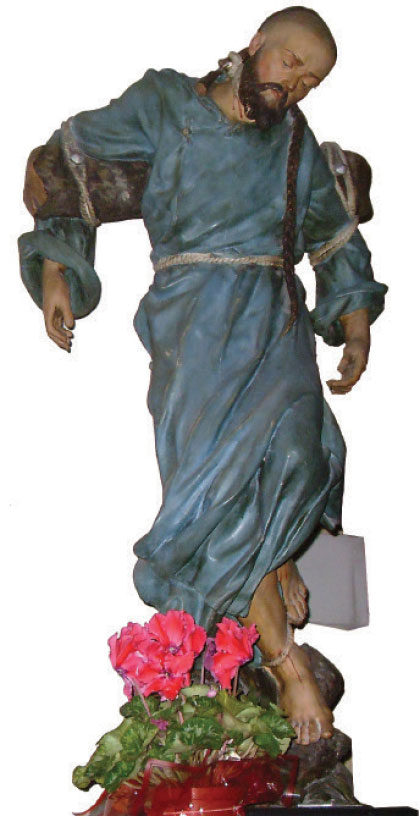 “I placed her under the especial protection of the Blessed Virgin—that is, I gave her a medal of the Immaculate Conception”(6) St. Perboyre wrote. “She did not then understand the value of the holy remedy she received; but, from that moment, she began to experience its beneficial effects … improving so rapidly that, at the end of four or five days, she was entirely changed. To a complete confusion of ideas, to fears that kept her ever in mortal agony … succeeded good sense, peace of mind, and happiness. She made her confession again and received Holy Communion, with the most lively sentiments of joy and fervor.”(7)
“I placed her under the especial protection of the Blessed Virgin—that is, I gave her a medal of the Immaculate Conception”(6) St. Perboyre wrote. “She did not then understand the value of the holy remedy she received; but, from that moment, she began to experience its beneficial effects … improving so rapidly that, at the end of four or five days, she was entirely changed. To a complete confusion of ideas, to fears that kept her ever in mortal agony … succeeded good sense, peace of mind, and happiness. She made her confession again and received Holy Communion, with the most lively sentiments of joy and fervor.”(7)
Other Vincentian priests related similar healings through the Medal:
“In the province of the Hou-Kouang, a Christian had been racked by a terrible fever for two months, accompanied by constant delirium. Three physicians had attended him, but in vain. Finding himself on the verge of death, he sent for me to administer the Last Sacraments. I gave him the Holy Viaticum, but deferred Extreme Unction, seeing that my duties would retain me in that locality some time longer. I made him a present of the medal, and advised a novena, assuring him, that if it were for the benefit of his soul, he would be restored to health. He began the novena; on the seventh day, the fever left him, and on the eighth he had recovered his usual strength. On the ninth day of the novena, he came to see me, and assured me that he was perfectly well. I reminded him of thanking the Blessed Virgin for so great a favor, and he promised to recite with his friends the Rosary in her honor.”(8)
“In Tien-Men … the Christians, numbering about two hundred, are distinguished for their piety and a great devotion to the Blessed Virgin. For eight years, successive inundations had reduced these Christians to extreme poverty; but this year, at the first sign of an overflow, they had recourse to Mary Immaculate by means of the medal, and soon the waters retired without doing the slightest harm to the Christian territory … And our Christians now return most grateful thanks to their good Mother for the abundant harvest they have just gathered.”(9)
St. Perboyre and other Christians suffered the same fate as St. Francis Regis Clet—and in the same spot—Wuhan. Who better to ask for an end to the pandemic than those who died for the Faith? Through them, the Faith remained strong.
During the Boxer Rebellion (1899-1901), more than 10,000 soldiers attacked Donglu, a small, destitute village where the Vincentians had founded a mission. The Catholics were clearly outnumbered, and they huddled together praying to our Blessed Mother. Suddenly, there appeared a beautiful woman in the sky, dressed in white and surrounded by light. The soldiers aimed their weapons at her and fired. She didn’t disappear. Instead, a “fiery horseman” appeared and charged toward them. Frightened, they retreated and fled the village.
To thank Mary for her powerful protection, a church was built and a painting was commissioned. The painting, which depicts Mary and her Child dressed in golden imperial robes, was declared the official image of Our Lady of China by Pope Pius XI (the same pope who beatified St. Catherine Labouré). The painting was placed above the altar, and the church became a Marian shrine and place of pilgrimage.
On May 23, 1995, at the vigil of Our Lady Help of Christians, more than 30,000 Catholics from the unofficial Chinese Church gathered for Mass at the shrine. During the opening prayer, Our Lady of China and her Son appeared, surrounded by rays of light. The apparition lasted approximately 20 minutes. The next day, the government banned pilgrims from the shrine, but almost 100,000 of them secretly crept to the grounds and celebrated the Feast Day.
The next year, the Communists demolished the church, arrested many priests, and stole the statue of the Blessed Mother. However, searching through the rubble, the faithful found the painting-intact.
Throughout her appearances in China, Mary has shown herself as a regal queen, tender mother, and powerful protector. Much like her apparition at Knock (see “The Many Faces of Mary”), her presence in Donglu strengthened her persecuted children, who have remained steadfast in the Faith for decades, intent on honoring Our Lady.
2 Ibid, p.10
3 Our Vincentian Mission in China: Yesterday, Today and Tomorrow, Fr. Robert Maloney, CM, famvin.org/wiki/Vincentians_in_China
4 Four Themes in the Spirituality of St. John Gabriel Perboyre, Fr. Robert Maloney, CM
5 Ibid
6 This was the original name of the medal; only after countless miracles had occurred from wearing it did it become known as the Miraculous Medal
7 The Miraculous Medal: Its Origin, History, Circulation, Results, Fr. Jean Marie Aladels
8 Ibid
9 Ibid
